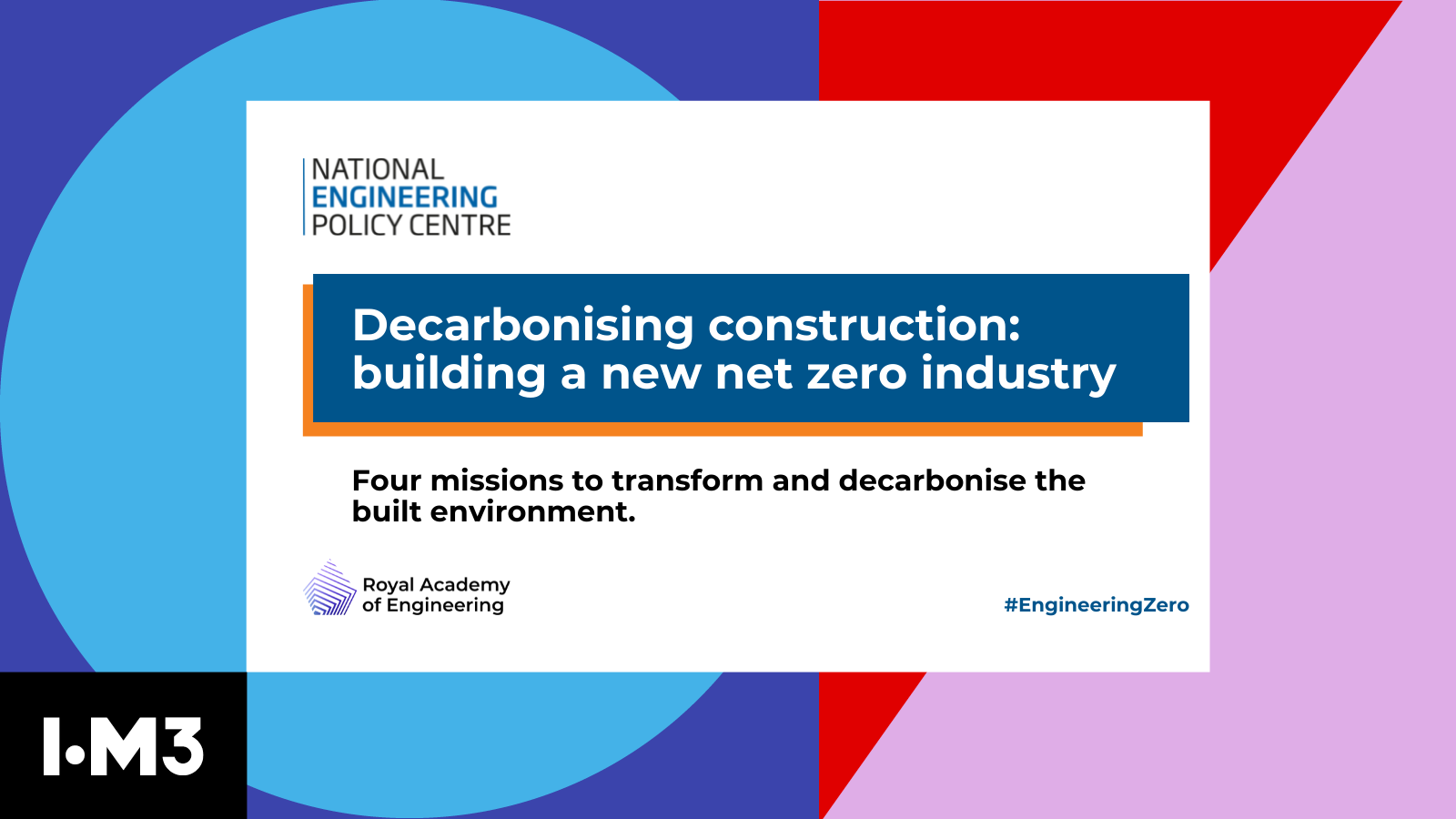NEPC release new report on decarbonising construction to reach net zero
A new report calls on both government and the construction industry to set challenging but clear targets that will deliver the net zero transformation at pace and at scale.

The report ‘Decarbonising construction: building a new net zero industry’, is published by the National Engineering Policy Centre, a partnership of 43 of the UK’s professional engineering organisations including IOM3.
Dr Sophie Parsons CEng CEnv MIMMM, IOM3 Strategic Advisor and LCA specialist at the National Composites Centre sits on the NEPC Net Zero Group involved in helping to put this report together. Sophie commented, ‘As we move from high level policy commitments to creating an implementation plan for net zero, this work identifies the key elements needed to help decarbonise the construction industry. Absolutely central to this is systems thinking and a whole life cycle approach.’
This report focuses on four interconnected missions that cut across the whole of the construction sector that require urgent attention to achieve net zero with six recommended referred to as ‘systems levers’. These overarching levers are areas where action taken now will result in rapid decarbonisation of the construction sector.
These include:
- The construction sector should adopt the same carbon emission reduction targets as the national targets of 68% and 78% by 2030 and 2035 respectively, compared to 1990 levels. These recommended percentage reductions should include embodied carbon of built infrastructure, including that of imported construction materials, not just the scope of emissions included in the UK carbon budget.
- Whole-life carbon assessment should be applied to public procurement: the construction sector must apply the updated guidance for appraising environmental impacts defined in HM Treasury’s Green Book, which aims to ensure that projects are assessed in terms of their contribution to the overall net zero target. The guidance in the HMT Green Book has recently been updated so that all interventions that are aimed at moving the UK towards the net zero target are first appraised in terms of their contribution to the net zero target.
- Current design and performance standards should be updated to enable more holistic design approaches for the built environment that support efficient design and reuse of materials. The updated standards must also ensure that all future projects, including those that are part of the economic stimulus following the COVID-19 pandemic, are obliged to contribute to meeting net zero. Infection control measures must also be integrated with energy efficiency to control health risks as the UK moves towards the net zero target.
- Government and the construction sector must define and promote the large-scale adoption of best practices in low-carbon procurement and construction, applying it to all new build and refurbishment projects by 2025. This must be underpinned by better use of digital technologies to improve productivity and reduce risk, such as the use of digital twins.
- Net zero and sustainability principles and practices must be a mandatory part of engineering education, continuous professional development and upskilling to change the culture of the construction industry.
- Government should apply a joined-up, systems approach across the construction sector and across government departments to ensure that total emissions from construction are minimised. Net zero emissions will not be achieved solely by building less and retrofitting existing building stock. It instead requires a radical and comprehensive transformation across the sector encompassing the definition of outcomes sought in the procurement of infrastructure, the detailed specification and design of built infrastructure and the processes of construction, retrofit and reuse. This transformation requires new systems that are consistent and joined up across these stages of the lifecycle of built assets and will need to be coherent across national, devolved and local government, placing social, economic and environmental outcomes at their heart.
To read the report, visit bit.ly/3zWG85G







